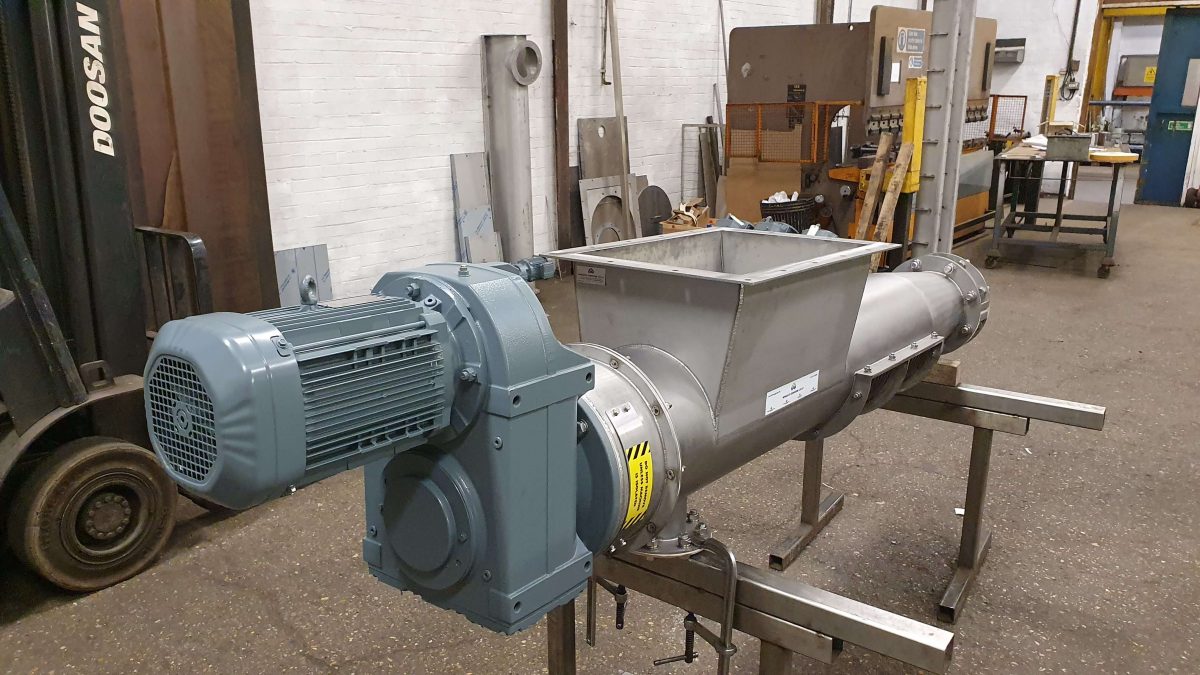Are you looking to automate your warehouse and streamline your management?
Automated conveyor systems like the U trough screw conveyor can offer intelligent and innovative solutions to everyday manufacturing issues, especially the transportation of bulk materials.
Systems like the U trough screw conveyor can enable faster transport from one area to another. If your warehouse space is ample and requires you to cover great distances or move goods at vertical or linear angles, automated systems can speed up this process. They can also reduce downtime and minimise the costs associated with material handling.
Let’s take a look at five of the most common automated conveyor systems you can use in your warehouse.
1: Belt Conveyor
When you think of automated conveyor systems, this is probably the one that springs to mind.
The belt conveyor consists of two or more pulleys (or ‘drums’) that drive an endless loop belt. Compared to other conveyor systems, the belt conveyor boasts a relatively simple design. However, this makes it one of the most versatile and straightforward handling systems you can use.
The belt conveyor is usually made from leather, metal, rubber or fabric, and its power-operated roll mount makes it simple to convey goods from A to B with minimal effort.
The belt conveyor is also one of the most economical conveyor systems. It can convey goods at long distances, high speeds, or inclines, and it can be used in most industries.
2: U Trough Screw Conveyor
U trough conveyors are built to perform in challenging environments, especially where space is a problem.
This conveyor is an excellent choice for those handling free-flowing powders, granules and flakes, whether food or chemicals. The system has a rotating helical blade that moves within a tube, or in this case, a trough.
The trough is the housing that the bulk material rides on. It can also support the weight of the screw and the material being conveyed. It also allows complete access to the screws and hangers, making maintenance much more straightforward and efficient.
U trough conveyors are most common in industries that handle animal feed, biomass, waste, and recycling. Their simple design makes them a simple, economical, and cost-effective purchase for most industries.
3: Chute Conveyor
These are some of the most cost-effective automated conveyor systems.
The chute conveyor can be used for multiple operations in a warehouse setting, including loading a belt conveyor and transferring bulk materials.
Chute conveyors usually come in two designs: the spiral chute conveyor and the gravity chute conveyor. As the name suggests, a gravity conveyor relies on the force of gravity to convey materials at a downwards angle, usually with the help of an inclined runway.
Spiral chute conveyors can move materials from one level to another without the need for manual handling or transference to other equipment. These conveyors can use the force of gravity to convey materials, or they can use additional power from a machine.
Chute conveyors are cost-effective, easy to install, and require minimal maintenance. They’re also suitable for use in multiple industries.
4: Trolley Conveyor
The trolley conveyor is made up of a series of overhead trolleys that can suspend multiple loads. An overhead rack supports them, and they’re connected by an endless conveying system, like a chain or a cable. They can run either horizontally or vertically.
They’re usually used to transport packaged materials inside a warehouse, particularly in spaces where floor space is limited. However, they’re also incredibly robust and versatile, and they can handle challenging environments and heavy bulk loads, making them suitable for most operations.
5: Bucket Conveyor
The bucket conveyor (also called a grain leg) can move flowable bulk materials vertically. They consist of endless chains or belts attached to ‘buckets’ – these remain in a carrying position until they are ready to be tipped to discharge the conveyed material.
Bucket conveyors are suitable for use in agricultural, pharmaceutical and food industries, and they can convey either bulk or small grain size materials. They require more maintenance than some other conveyors, but they’re still simple to use, versatile, and efficient.









